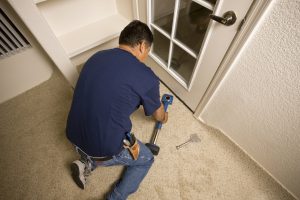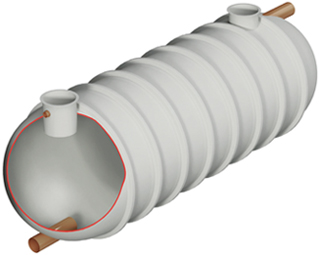 We never want to think about our homes undergoing any kind of drastic or unexpected upheaval, but the chance of flooding is something that many of us face. Flooding in the home can come quickly without much warning, leaving you to deal with a host of lingering problems that you probably aren’t prepared for.
We never want to think about our homes undergoing any kind of drastic or unexpected upheaval, but the chance of flooding is something that many of us face. Flooding in the home can come quickly without much warning, leaving you to deal with a host of lingering problems that you probably aren’t prepared for.
In this article, we’re looking at how to deal with the after-effects of flooding in your home, including how to go about the cleaning-up process and what is involved in recovering from the toll that a flood can take.
Going back to your home
If the emergency services had called for an evacuation, you will return to your home once it is safe to do so. The emergency services and your local council will announce when it is safe to go back to your home, and this is when the recovery process can begin. During the evacuation process, it is important to keep in mind that, depending on the severity of the flood, it may be a while before you are able to return to your home.
Once it has been deemed safe to go home, great caution and care will be needed in order to sort through the aftermath. An electrician should be contacted to: turn off the mains (if this had not been done prior to the flood), check over the electrics, identify potential hazards, and to advise on future changes to wiring or, for example, socket placement.
There may still be standing water left in your property which will need to be pumped away. Flood water can contain a number of different hazards, from chemical and animal waste to hidden sharp objects and sewage. Stay away from any source of electricity while standing water remains, and always wear protective clothing: waterproof overalls, gloves, wellington boots and a face mask are all necessary when wading through standing flood water.
The water can be pumped by a professional drainage company, and you can either contact one directly or check with your local council for recommendations.
Sort through your home
With water drained from your home, you can now start the difficult process of going through your property and calculating damage, sorting through your belongings and throwing out what has been damaged beyond repair or is in need of replacing. This is an intense part of the cleaning process and can seem overwhelming for many.
For insurance purposes, it will be helpful to document the flood damage extensively. Take pictures or record a video to show the extent of the flooding, and list all the damage caused to both your home and your belongings.
Electrical appliances will need to be tested to see if they can be used safely or not. Your electrician can do this, so keep note of what appliances or equipment have come into contact with flood water.
If you had time to prepare for the flood, hopefully many fragile cherished belongings will have avoided damage because you were able to move them to safety. If you were unable to prepare, it can be a tough challenge to sort through your home bit by bit, deciding what to throw away and what you can salvage. Recover what you can and keep track of what needs to be thrown away. Your council will likely provide a skip for you to dispose of excess rubbish or damaged belongings.
For those who are insured, a ‘loss adjuster’ will be assigned to your property. They will:
- Assess damage throughout
- Advise on what can and can’t be thrown out
- Assess what needs repairing, rebuilding or replacing
- Assess your contents and buildings claims
Drying, cleaning and rebuilding
 Once the home has been stripped of damage, belongings have been sorted, thrown out or retrieved and the water removed, your home can start to dry out. This can take a substantial amount of time, weeks or months in many cases, but may be quicker if the flooding wasn’t too severe.
Once the home has been stripped of damage, belongings have been sorted, thrown out or retrieved and the water removed, your home can start to dry out. This can take a substantial amount of time, weeks or months in many cases, but may be quicker if the flooding wasn’t too severe.
You should keep your home well ventilated – to speed the process up a bit, and to help prevent further mould from developing – and the central heating can be kept on to encourage surfaces to dry up, once the system has been checked and approved by a qualified engineer. Dehumidifiers will also help, removing moisture in the air to accommodate more efficient drying and cleaning, and can speed up the process substantially in enclosed rooms.
Standard household disinfectants and antibacterials can be used to clean up your home. Thoroughly clean your rooms one by one. It helps to be meticulous here, starting with lower portions of walls where damage is likely to have been worse. It can take some time to get your rooms back to normal, and will probably require you going over rooms once or twice more, but giving them a good clean will make your home feel much more familiar.
Any major repairwork can now be dealt with. Use professional, qualified companies and builders to carry out structural repairs, and you can now think about redecorating too. Your loss adjustor will recommend areas which need to be repaired, and for those who are uninsured, you can talk to your council for information on grants and charities that might be able to help with your recovery.
If you have suffered flood damage in your home and require a professional drainage company to pump water from your home, Wildon UK are here to help. Our modern and reliable water pumps can clear excess floodwater from your property quickly and efficiently, and our experienced team are on hand to provide all the advice and support you need to get your home back to normal after a flood. To find out more about all of our services, don’t hesitate to get in touch with us today.
Go back to








